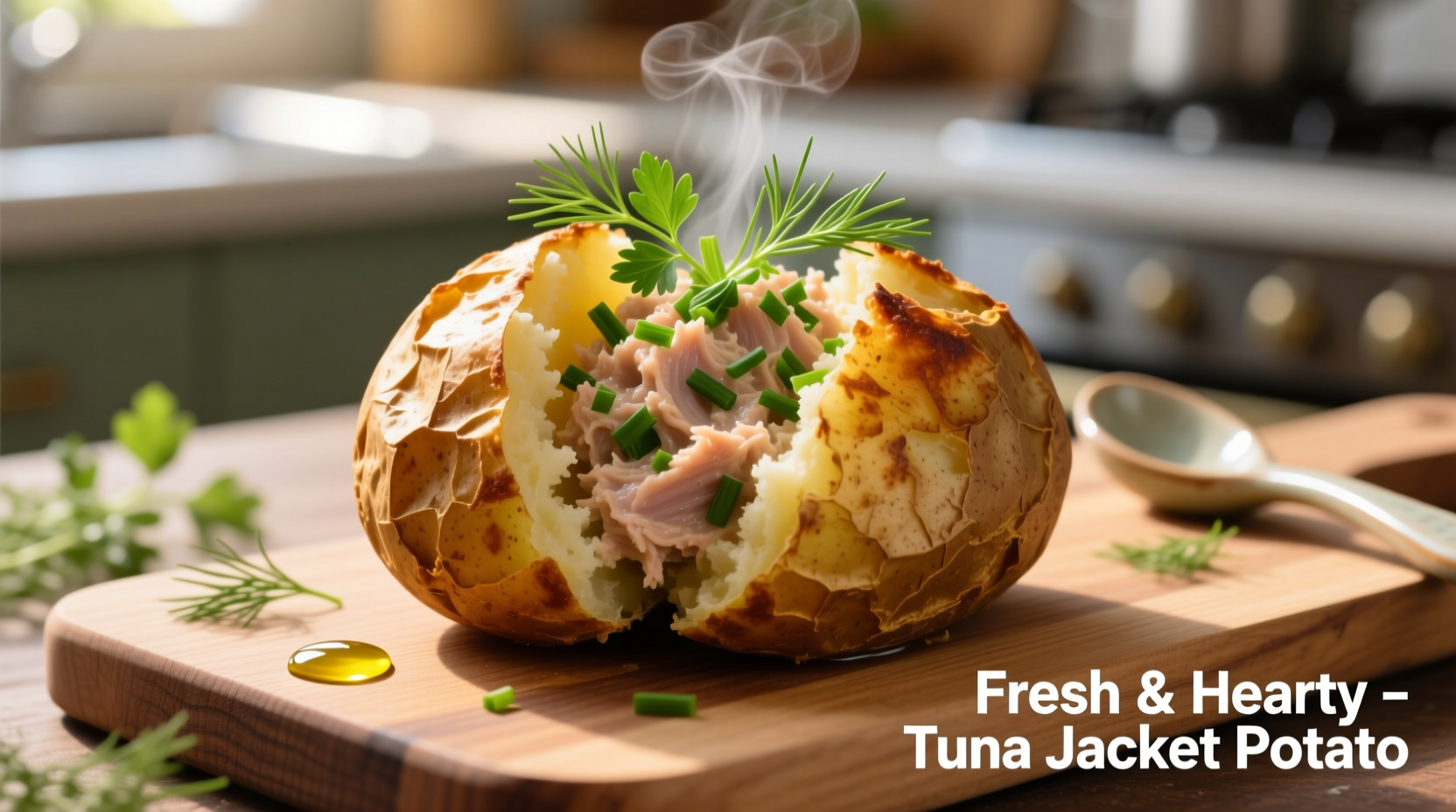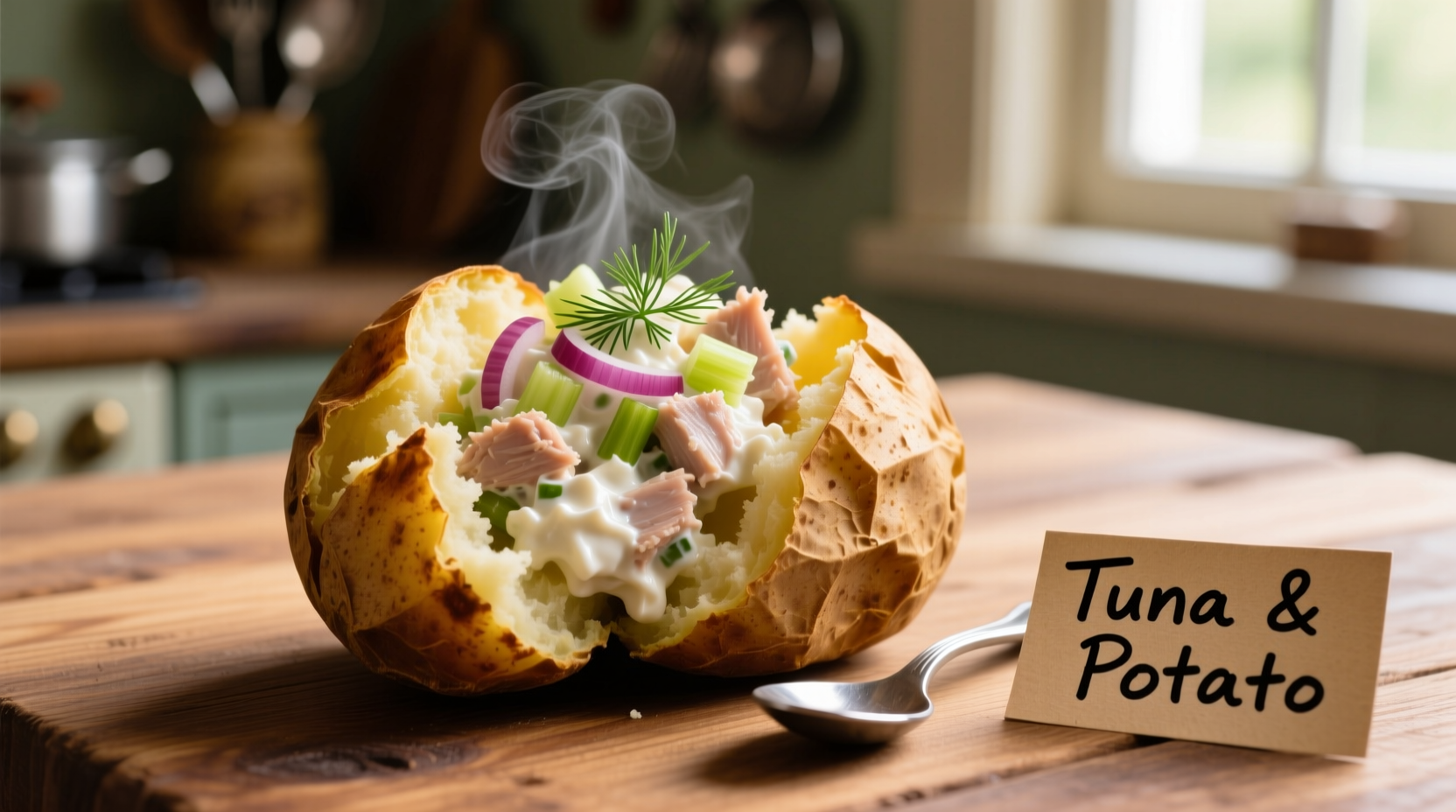The Ultimate Tuna Jacket Potato Recipe
Nothing beats a classic British comfort food like a tuna jacket potato. This simple yet satisfying meal has been a lunchtime staple since the 1970s when jacket potatoes gained popularity in UK cafes. Today, we're sharing the perfected version that delivers maximum flavor with minimal effort.
Why This Recipe Works
Unlike basic recipes that leave you with dry potatoes or bland tuna filling, our method ensures:
- Perfectly fluffy baked potato every time
- Creamy tuna salad with balanced acidity
- Optimal cooking temperatures for food safety
- Customizable to suit dietary preferences
Essential Ingredients
For two generous servings, you'll need:
- 2 large russet potatoes (about 300g each)
- 140g canned tuna in spring water, drained
- 3 tbsp light mayonnaise
- 1 tbsp Greek yogurt
- 1 tbsp finely diced red onion
- 1 tbsp sweet pickle relish
- 1 tsp lemon juice
- Handful of fresh chives, chopped
- Salt and freshly ground black pepper to taste
- Optional: 2 tbsp grated cheddar cheese

Step-by-Step Preparation
1. Potato Baking Process
Proper potato preparation is crucial for the perfect jacket potato base:
- Preheat oven to 200°C (400°F)
- Scrub potatoes thoroughly and dry completely
- Pierce each potato 4-5 times with a fork
- Rub potatoes with olive oil and sprinkle with sea salt
- Place directly on oven rack and bake for 45-55 minutes
- Test for doneness by squeezing (carefully!) - should give slightly
| Tuna Option | Flavor Profile | Drain Time | Best For |
|---|---|---|---|
| Canned in spring water | Mild, clean taste | 5-7 minutes | Classic preparation |
| Canned in oil | Richer, more robust | 10-15 minutes | Enhanced flavor |
| Fresh cooked tuna | Bright, clean flavor | N/A | Higher-end version |
| Vegetarian alternative | Earthy, umami | N/A | Plant-based option |
2. Tuna Salad Assembly
While potatoes bake, prepare the tuna filling:
- Combine drained tuna, mayonnaise, and Greek yogurt in a bowl
- Add red onion, relish, lemon juice, and half the chives
- Season with salt and pepper (remember tuna contains sodium)
- Mix gently until just combined - avoid overmixing
- Cover and refrigerate until potatoes are ready
3. Final Assembly
- Carefully slice open baked potatoes and fluff interior with fork
- Sprinkle with salt while hot to help absorption
- Fold in half the tuna mixture to incorporate flavors
- Mound remaining tuna salad on top
- Sprinkle with remaining chives and optional cheese
- Serve immediately while potatoes are hot
Professional Chef Tips
Sophie Dubois, our culinary expert with French training in European cuisine techniques, shares these professional insights:
"The key to exceptional tuna jacket potatoes lies in temperature management. Always mix half your tuna salad directly into the hot potato - this allows the warmth to slightly melt any cheese and infuse the potato with flavor. The remaining cold tuna salad on top provides that delightful temperature contrast that elevates this simple dish."
Nutritional Benefits
According to USDA FoodData Central, one serving (one stuffed potato) provides:
- Approximately 380 calories
- 24g protein (excellent source)
- 45g complex carbohydrates
- 12g healthy fats
- Significant potassium, vitamin C, and B vitamins
This balanced profile makes tuna jacket potatoes an ideal meal for active individuals seeking sustained energy. The combination of complex carbs from potatoes and lean protein from tuna creates a satisfying meal that keeps you full for hours.
When This Dish Works Best
Understanding the appropriate context for tuna jacket potatoes ensures optimal enjoyment:
- Perfect for: Quick lunches, post-workout meals, casual dinners
- Less suitable for: Formal occasions, very hot weather (due to oven use)
- Ideal timing: Best served immediately after preparation
- Dietary considerations: Easily adapted for gluten-free diets (naturally GF)
Food Standards Agency UK recommends consuming cooked potatoes within two hours at room temperature or refrigerating promptly to prevent foodborne illness.
Common Mistakes to Avoid
Based on analysis of cooking forums and recipe reviews, these errors frequently ruin otherwise good tuna jacket potatoes:
- Undercooked potatoes - Always test by squeezing (with oven mitt!)
- Overloading with wet ingredients - Excess moisture makes potatoes soggy
- Using warm potatoes with all tuna salad - Creates mushy texture
- Skipping the salting step - Salt on hot potatoes absorbs better
- Using low-quality tuna - Makes a significant flavor difference
Storage and Reheating Guidelines
For optimal food safety and quality:
- Refrigerate leftovers within two hours of cooking
- Store components separately for best results
- Consume within 24 hours for optimal texture
- To reheat: Microwave potato first, then add cold tuna salad
The Food Standards Agency advises against reheating potatoes more than once due to potential bacterial growth risks.
Popular Variations
Customize your tuna jacket potato with these chef-approved variations:
- Mediterranean style: Add chopped sun-dried tomatoes, olives, and feta
- Spicy version: Mix in sriracha or chopped jalapeños
- Herbaceous option: Substitute chives with dill or parsley
- Creamy alternative: Replace mayo with avocado
- Extra protein boost: Add hard-boiled egg pieces











 浙公网安备
33010002000092号
浙公网安备
33010002000092号 浙B2-20120091-4
浙B2-20120091-4